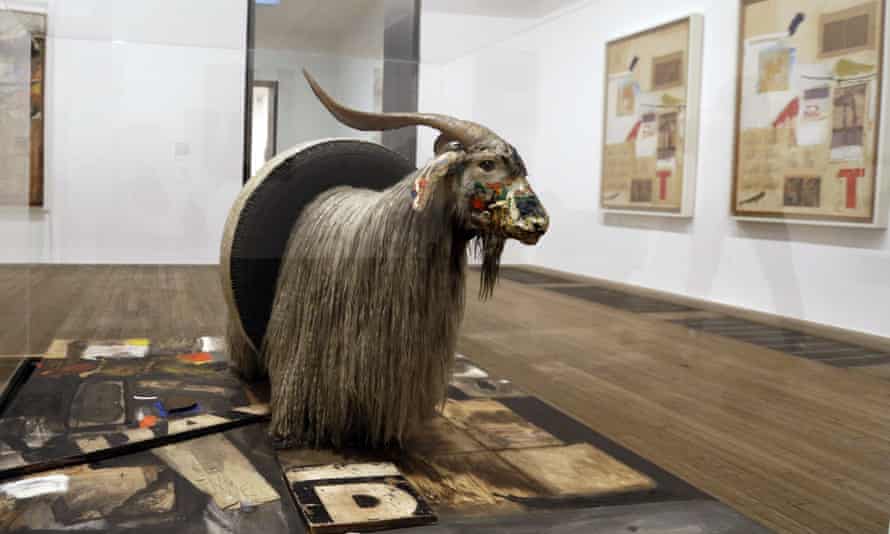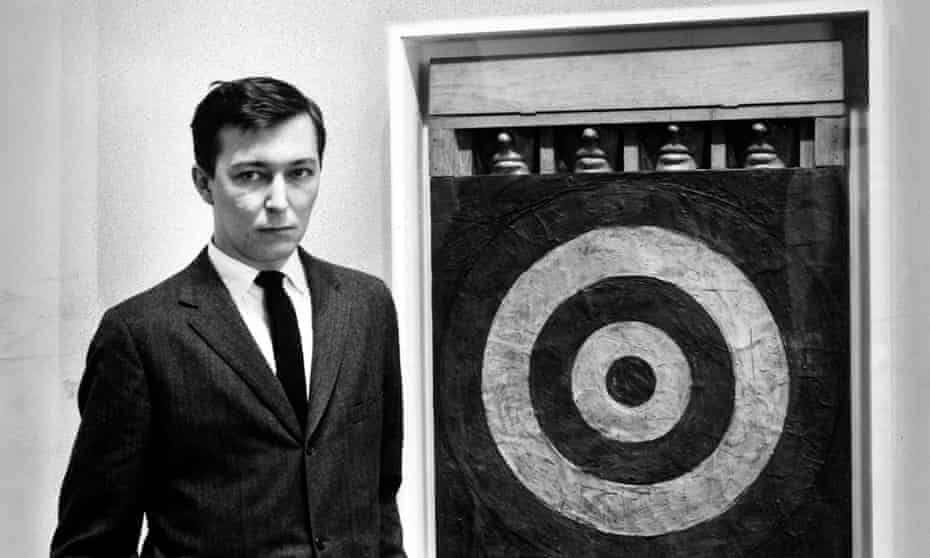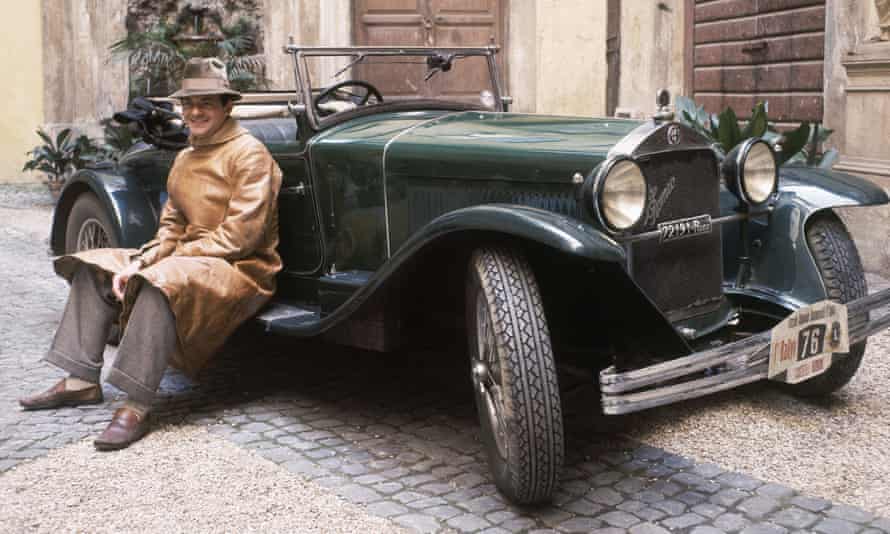 |
| Three’s a crowd … Jasper Johns, Cy Twombly and Robert Rauschenberg. |
Lust, heartbreak and suggestive sculpture: was this art's greatest love triangle?
For Valentine’s Day, we look at how the interweaving passions of three American greats – Cy Twombly, Jasper Johns and Robert Rauschenberg – were as mesmerising as their art
My hero / Cy Twombly by Edmund de Waal
Friday 12 February 2021
T
The answer is as epic and enigmatic as Twombly’s art. In the early 1950s he met a young artist called Robert Rauschenberg and they became lovers. On one occasion while they were studying at the avant-garde art school Black Mountain College, he saved Rauschenberg from drowning in a lake. It was no accident: Rauschenberg had attempted suicide. Twombly followed him into the water unhesitatingly. How’s that for romantic?
Rauschenberg and Twombly were both southerners. Rauschenberg, who was quarter Cherokee, came from Texas, Twombly from the heart of the old Confederacy in Lexington, Virginia. The passion of their relationship is beautifully preserved in black and white photographs that Rauschenberg took on a visit to Rome in 1952. They’re among his earliest artworks. A piece called Cy + Roman Steps shows Twombly from the waist down as he walks down the staircase from a church on top of the Capitoline Hill. In five photos that work as a cinematic sequence, he gets closer until his crotch looms large at the centre of the frame.
Fifty-nine years later, in 2011, the British artist Tacita Dean filmed a “portrait” of Twombly in a small studio he kept behind a storefront in Lexington. Her camera watches him leafing through catalogues of Rauschenberg’s late work. His former lover had died in 2008. And Dean’s poetic, meditative film is probably the closest anyone got to interviewing him about their relationship.

Another photograph by Rauschenberg shows Twombly standing beside the immense marble hand of the Colossus of Constantine, also on the Capitoline in Rome. Perhaps it was taken on the same day as the suggestive steps sequence. It’s tempting to see the same sense of humour in it, as Twombly looks directly at the towering, upward-pointing phallic finger of the emperor who led Rome to Christianity.
That in turn resembles the sheer bad-taste fun that Rauschenberg’s friend, the art critic Robert Hughes, saw in Monogram, his installation of a horny stuffed goat inserted through a rubber tyre. Writing in the Guardian, Hughes called it “the most powerful image of anal intercourse ever to emerge from the rank psychological depths of modern art. Yet it is innocent, too, and sweet …”
But by the time he created Monogram in a series of experimental stages between 1955 and 1959, Rauschenberg’s affair with Twombly was over. In 1955 Rauschenberg became the lover of another young artist, also from the south, and their encounter would change art itself. Rauschenberg spoke eloquently of how he was knocked over by Jasper Johns: “I have photos of him then that would break your heart. Jasper was soft, beautiful, lean, and poetic. He looked almost ill.”
Rauschenberg was now working on the revolutionary works he called “combines” – three-dimensional assemblages of paint, photography and found stuff. In 1954 Twombly took a beautifully time-frozen, sepia-tinted photograph of bags and cartons and sprawling trash that Rauschenberg was hoarding for combines. Within a year of this photo Twombly was, as Johns’ highly unofficial biographer Jill Johnston has it, “dumped”.

Rauschenberg started Monogram the year he changed partners. Perhaps that lusty goat really is a symbol of love’s violence and unpredictability, its goatishneess. Rauschenberg and Johns lived in lofts on adjacent storeys of a ruinous former industrial building on Pearl Street in lower Manhattan. They became partners in business, supporting themselves by dressing windows for uptown department stores under the pseudonym Matson Jones.
They were also true creative collaborators. The cliche of modern art history is that the macho abstract expressionist painters reigned supreme in postwar America until Johns and Rauschenberg subverted this painterly big-boy cult. In reality, the freedom and experiment that abstract expressionism brought to art, its popularisation of the idea that art can be totally divorced from traditional picture-making, was an immense liberation. What Rauschenberg and Johns did was to find new and disconcerting ways to connect its freedom with raw, but mysterious traces of real life.
Rauschenberg’s combines have abstract smears of paint and constellations of textures and images that are intensely suggestive without ever becoming clear: in Untitled (c 1954) a photograph of a gilded age southern dandy in a white suit and a stuffed Dominique hen shelter under a tower of photographs and newsprint supported by a neoclassical furniture leg. But it was the art Johns was making on the floor below that would first take the art world by storm.
In an act that reveals their mutual supportiveness, Rauschenberg, who was showing his work to the art dealer Leo Castelli, took Castelli downstairs to see Johns’s studio. Castelli was smitten. Flags made of collaged newspapers and encaustic paint, painted targets with casts of faces or body parts in little cubby holes … it was a similar mix of the painterly and roughly found but more densely packed, a haiku compared with Rauschenberg’s Ulysses – but just as personal. Johns’ Target With Plaster Casts (1955) includes a cast of a penis in the array of body parts above a depiction of a target. It is a less equivocal carnal reference than Rauschenberg’s goat, yet similarly mysterious.

Today, interpretations of Johns and Rauschenberg tend to see the “coded” nature of their 50s art as a defensive strategy in the homophobic US of the McCarthy era. A recent take on Johns’s Targets has it that he “may have felt himself a target”. Yet Johns and Rauschenberg weren’t living in small-town America but in New York. Were they really as cowed or closeted as all that? There’s a more joyous way of interpreting Johns’s Targets. A target is to be shot at. In one of his most sumptuously erotic drawings, the Renaissance artist Michelangelo portrays nude youths firing arrows – their target is a truncated statue. Cupid the love god was also no mean archer.
But where was spurned Cy Twombly while Johns and Rauschenberg were shooting at targets and stuffing goats through tires? In 1957, the year Johns had his first hit show, Twombly started living partly in Italy. He would soon settle there and develop his art career in Europe, only being recognised as an American great in the 1990s. Rome was the location of some of his most intense times with Rauschenberg: was he wallowing in memory? That is what his art feels like – one long hot bath in remembered love. As the years went by his canvases only got bigger, more perfumed and Proustian. Twombly always remained the most abstract expressionist of the three, while also being the most explicitly erotic and romantic.
Twombly got married and had a son, but had a string of male relationships. He also stayed friends with Rauschenberg. Even the tightlipped official biography released by the Twombly Foundation acknowledges that he sometimes spent winters “with Rauschenberg on Captiva Island in Florida”.
The last five decades of Twombly’s life, painting evocations of myth and lost love among the ruins of Rome, might be seen as a recapturing of a day with Rauschenberg on the Capitoline in 1952.
Or not. The ambiguities of these three artists are deliberate and unsolvable. Biographers founder on their elusiveness. But I don’t believe their evasions and silences should be seen as a defensive code. It is more of an artistic bargain the three of them made when they were young and in love. They would transfigure their feelings into art, and the art would be a labyrinth, a source of endless pleasure and perplexity. The four-letter word that’s wanted here is not code but poem. Better still – love poem.


No comments:
Post a Comment